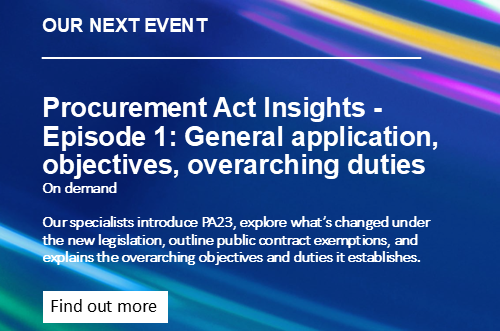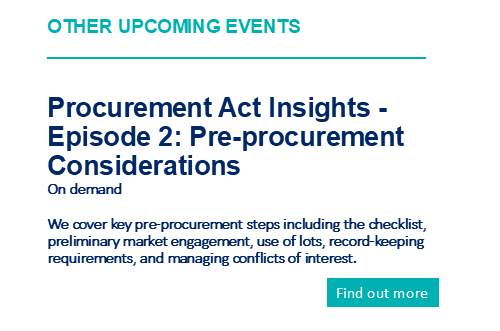- Details
How to defend a smash and grab adjudication
![]() Michael Comba and David Owens provide seven top tips on defending smash and grab adjudications.
Michael Comba and David Owens provide seven top tips on defending smash and grab adjudications.
Smash and grab adjudications arise when a contractor under a construction contract has made a payment application to which the employer has yet to respond with a payment or pay less notice. As a result, the contractor can accrue a right to payment for sums claimed without any reference to the substance of the sums claimed.
The Judge in ISG Construction Ltd v Seevic College[1] made it clear that “absent fraud, in the absence of a payment or payless notice issued in time by the employer, the contractor becomes entitled to the amount stated in the interim application irrespective of the true value of the workcarried out. The employer can defend itself by serving the notices provided for by the contractual provisions.”
Therefore, a failure to adequately respond to payment applications can find employers on the sharp end of a notice of adjudication claiming substantial sums, and a sinking feeling they have to pay for something that they might not even have the substantive benefit of.
They rightly bring a sense of doom and gloom, but all is not necessarily lost. There are tools available to mount a successful defence or, at the very least, mitigate any loss. Below, we discuss our top seven tips to help deal with any smash and grab claim.
1. Don’t panic
It is easy to have a pessimistic viewpoint on receipt of a smash and grab claim. The draconian consequences of not issuing a pay less notice on time, means it can be very tempting to raise the white flag immediately.
However, smash and grab claims are more nuanced than many people think. A surprising number of claims proceed based on a poor understanding of interim payment regimes, viewing them as some sort of magic loophole to get money out of employers who are not hot enough on their notices. Unfortunately, some employers unintentionally allow contractors to evade liability.
The courts have helpfully clarified that payment applications have their own procedural and contractual requirements to comply with. Henia Investments Inc v Beck Interiors Limited[2] is a go-to authority for anyone responding to a smash and grab claim. In Henia, it was held that a payment application must be in substance, form and intent and free from ambiguity.
If a payment application doesn’t meet those requirements, then it will be difficult for a contractor to get its smash and grab claim off the ground.
2. Avoid complacency
Conversely, employers can be over-confident when receiving a smash and grab, and gather reams of evidence and spreadsheets showing that the claimed sums are inflated or invalid.
Of course, this evidence is likely to be neither here nor there if the payment regime has not been complied with. Reviewing this evidence can waste precious time in adjudications and delay reaching an inevitable conclusion that the employer might be on the hook, even for some outlandish sums.
It’s crucial to look honestly at whether the contractor has a valid argument, no matter how frustrating, that they have a procedural entitlement to sums claimed. If they do, it is often advisable to look at prompt settlement with the contractor to cut your losses and immediately focus on how these sums could be recovered elsewhere.
3. Check inboxes
As per Henia, the contractor will need to show that it issued a procedurally valid payment application.
It’s vital to look at how the contractor sent the payment application, when it was sent and to whom was it sent. All these elements might give rise to various counter-arguments, such as:
Did they issue it in a way allowed by the contract? Does the contract specify a particular portal or address to which payment applications should be issued?
Is there still time to issue a pay less notice? Has the contractor incorrectly calculated the timetable?
Did the right person receive it? Does the contract specify that the employer should receive applications or an agent instead?
Essentially, was it in substance, form and intent a payment application and was it free from ambiguity?
If it wasn’t, you might have a chance to demonstrate the application itself was invalid. Cast a very critical eye – the court has noted that the procedural requirements for a payment application are a ‘high threshold’ to meet.[3]
4. Check outboxes
Are you sure a pay less notice wasn’t given? It might be that an email from the employer rejecting a payment application’s contents could be construed as a pay less notice.
Ordinarily, pay less notices will be given in the form of a particular document. However, the requirements of the Construction Act are that the notice must set out the sum the employer thinks is due and the basis on which it is calculated.
While certain contractual requirements may also apply, the Construction Act does not specify a particular manner or form for pay less notices. An email specifying the sum due and how it is calculated could be sufficient. In adjudication, responding parties have a fairly wide entitlement to raise every defence they can, so cast a wide net.
5. Look at the items claimed for
The right to interim payments under the Construction Act can sometimes be misconstrued as giving contractors the right to incessantly make payment applications at any time they like.
The court has described such behaviour as ‘making a mockery’ of the Construction Act. [4] The Construction Act still gives contracting parties fairly free reign to set out parameters for interim payment regimes. For example, the contract should specify when a contractor may make payment applications. It should also clarify that a contractor can only raise one application against a particular cycle or item of work.
So even if a payment application is such in substance, form and intent, it is still worth checking the following:
Have the items been claimed for already? Have they already been the subject of a previous pay less notice or payment?
Has the right to raise an application been triggered? Does the contract specify that works have to reach a certain stage before applications can be made?
Has the contractor lost the right to raise applications? Has practical completion been certified already?
If so, you might be able to claim that the contractor’s right to apply for payment never arose in the first place.
6. All may not be lost
If you are on the unfortunate end of a smash and grab, don’t be too despondent. If there is a dispute on the substance of the amounts claimed, for example, if they are overvalued, there are usually recovery mechanisms available.
Your contract should provide for deducting overpayments in the interim payment cycle and through the final account process. Alternatively, you might want to consider whether you have grounds for a ‘true value’ adjudication in which an adjudicator can reopen interim payments already made.
7. Training
It’s obviously better to avoid the situation in the first place. True value adjudications, for example, can be complicated and costly exercises. Being on top of payment applications can cut off any smash and grab claims immediately.
Those dealing with construction projects should be well-versed in interim payment regimes under all the standard forms of construction contracts and under the Act more generally. They should be familiar with the timing of payment cycles and how to issue a pay less notices correctly.
Employers will often use external consultants to manage the process for the reason of avoiding problems. Even here though, it is crucial that internal employees are also well trained so they can ensure external advisers have the appropriate information to manage the process successfully.
Michael Comba is an Associate and David Owens is a Partner at Sharpe Pritchard LLP.
[1] [2014] EWHC 4007 (TCC)
[2] [2015] EWHC 2433 (TCC).
[3] Surrey and Sussex Healthcare NHS Trust v Logan Construction (South East) Limited [2017] EWHC 17 (TCC).
[4] Caledonian Modular Ltd v Mar City Developments Ltd [2015] EWHC 1855 (TCC).
For further insight and resources on local government legal issues from Sharpe Pritchard, please visit the SharpeEdge page by clicking on the banner below.
This video is for general awareness only and does not constitute legal or professional advice. The law may have changed since this page was first published. If you would like further advice and assistance in relation to any issue raised in this article, please contact us by telephone or email
|
Click here to view our archived articles or search below.
|
|
ABOUT SHARPE PRITCHARD
We are a national firm of public law specialists, serving local authorities, other public sector organisations and registered social landlords, as well as commercial clients and the third sector. Our team advises on a wide range of public law matters, spanning electoral law, procurement, construction, infrastructure, data protection and information law, planning and dispute resolution, to name a few key specialisms. All public sector organisations have a route to instruct us through the various frameworks we are appointed to. To find out more about our services, please click here.
|
|
OUR RECENT ARTICLES
December 10, 2025
Sharpe Pritchard appointed to £60m London Boroughs’ Legal Alliance frameworkSharpe Pritchard, one of the UK’s leading public law firms, has been re-appointed to the London Boroughs’ Legal Alliance (LBLA) Solicitors Panel.
November 20, 2025
Strengthening the standards and conduct framework for local authorities in EnglandJames Berry offers his insight into how the proposed changes to standards and conduct rules will affect local authorities.
November 04, 2025
Procuring and operating open frameworks under the Procurement Act 2023Chantelle Pink offers advice to authorities on open frameworks and how to procure them.
October 31, 2025
Building Solar – 5 Top Tips for Solar Farm Construction ContractsSolar farm construction contracts are in focus following fascinating insights into the continuing global uptake and expansion of renewables, and particularly solar, within the 2025 mid-year report of Ember, a global energy think tank.
|
|
OUR KEY LOCAL GOVERNMENT CONTACTS
|
||
|
Partner 020 7406 4600 Find out more |
||
|
Partner 020 7406 4600 Find out more |
||
|
Rachel Murray-Smith Partner 020 7406 4600 Find out more |







 Catherine Newman
Catherine Newman
